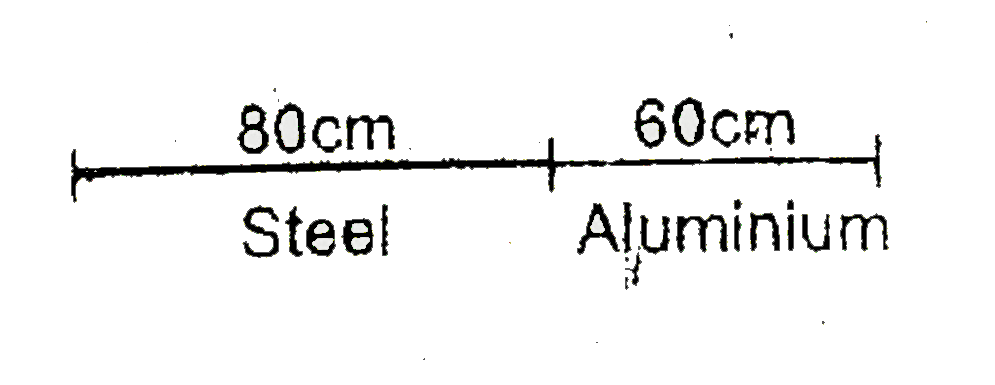A 40 cm wire having a mass of 3.2 g is stretched between two fixed supports 40.05 cm apart. In its fundamental mode, the wire vibrates at 220 Hz. If the area of cross section of the wire is 1.0mm2, find its Young modulus.
The correct Answer is:A, B
Step by step video, text & image solution for A 40 cm wire having a mass of 3.2 g is stretched between two fixed supports 40.05 cm apart. In its fundamental mode, the wire vibrates at 220 Hz. If the area of cross section of the wire is 1.0 mm^2, find its Young modulus. by Physics experts to help you in doubts & scoring excellent marks in Class 12 exams.
Topper's Solved these Questions
- BOOK - PHYSICS GALAXY - ASHISH ARORACHAPTER - WAVES EXERCISE - Advance MCQs with One or More Options Correct30videos
WAVES
- BOOK - PHYSICS GALAXY - ASHISH ARORACHAPTER - WAVE OPTICSEXERCISE - Unsolved Numerical Problems28videos
WAVE OPTICS
- BOOK - PHYSICS GALAXY - ASHISH ARORACHAPTER - X-RAYSEXERCISE - Unsolved Numerica Problem for Preparation23videos
X-RAYS
Similar Questions
A 40cm long wire having a mass 3.2g and area of cross - section 1mm2 is stretched between the support 40.05cm apart. In its fundamental mode , it vibrates with a frequency 1000/64Hz. Find the young's modulus of the wire.
View SolutionA 40 cm long wire having a mass 3.1 gm and area of cross section 1mm2 is stretched between the support 40.05 cm apart. In its fundamental mode , it vibrates with a frequency 1000/64Hz. Find the young's modulus of the wire in the form X×108N−m2 and fill value of X.
View Solution
Knowledge Check
- Question 1 - Select One
A steel wire of length 1m is stretched between two rigid supports. The wire is vibrating in its fundamental mode with a frequency 100 Hz. The maximum acceleration at the mid point of the wire is 986 m/s2 . Then the amplitude of vibration at the midpoint is
A25 cmB0.5 cmC0.25 cmD50 cm - Question 2 - Select One
A decrease in temperature of 40∘C produces a 0.1 % strain in a wire stretched between two fixed supports. If the area of cross section of the wire is πmm2 and Young's modulus of its material is 160 GPa, the thermal stress in the wire is
A16 GpaB160 MpaC160πkPaD160πPa - Question 3 - Select One
A wire stretched between two rigid supports vibrates in its fundamental mode with a frequency of 45 Hz. The mass of the wire is 3.5×10−2kg and its linear mass density is 4.0×10−2kgm−1. What is the speed of a transverse wave on the wire?
A69ms−1B79ms−1C89ms−1D99ms−1
Figure shows an aluminium wire of length 60cm joined to a steel wire of length 80cm and stretched between two fixed supports. The tension produced is 40N. The cross-sectional area of the steel wire is 1.0mm2 and that of the aluminimum wire is 3.0mm2 The minimum frequency of a tuning fork which can produce standing waves in the system with the joint as a node is 10P (in Hz) the find P. Given density of aluminimum is 2.6g/cm3 and that of steel is 7.8g/cm3.
 View Solution
View SolutionFigure shows an aluminium wire of length 60 cm joined to a steel wire of length 80 cm and stretched between two fixed supports. The tension produced is 40 N. The cross-sectional area of the steel wire is .1.0mm2 and that of the aluminium wire is 3.0 mm 2. What could be the minimum frequency of a tuning fork which can produce standing waves in the system with the joint as a node ? The density of aluminium is 2.6gcm−3and that of steel is 7.8gcm−3
 View Solution
View SolutionA wire having a linear density of 0.05g/cmis stretched between two rigid supports with a tension of 450N. It is observed that the wire resonates at a frequency of 420 Hz. The next higher frequency at which the same wire resonates is 490 Hz. Find the length of the wire.
View SolutionA metal wire is clamped between two rigid supports 1 m apart. It is stretched with a tension of 20 N. If mass of wire is 9.8 g, determine its fundamental frequency.
View SolutionA wire with mass 40.0 g is stretched so that its ends are tied down at points 80.0 cm apart.The wire vibrates in its fundamental mode with frequency 60.0 Hz and with an amplitude at the antinodes of 0.300 cm.
(a) What is the speed of propagation of transverse wave in the wire?
Compute the tension in the wire.
(c) Find the maximum transverse velocity and acceleration of particles in the wire.View Solution

